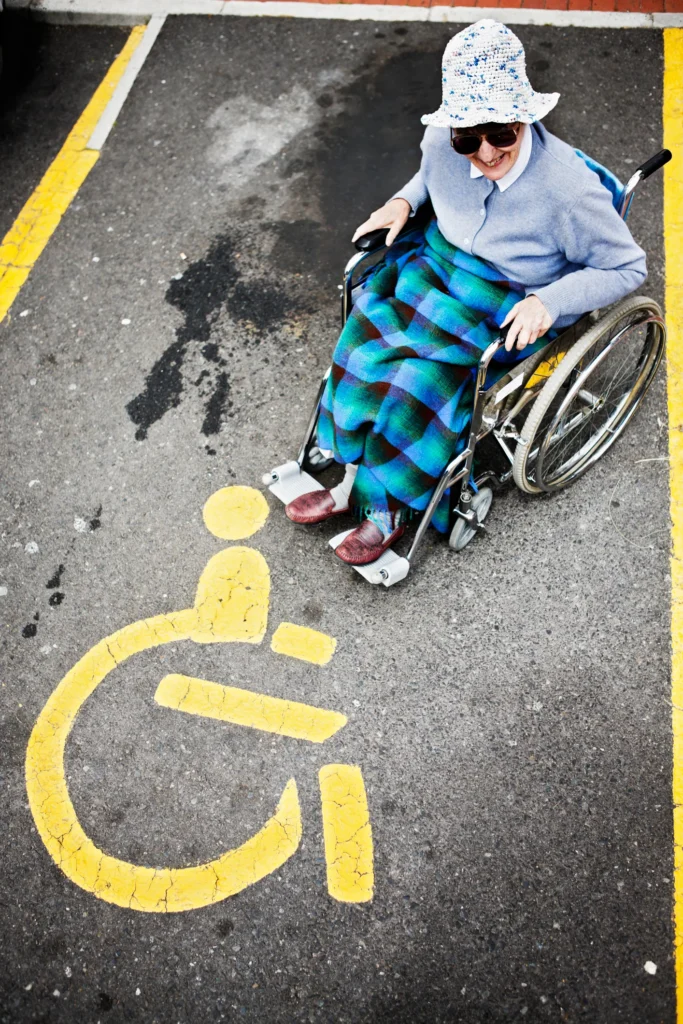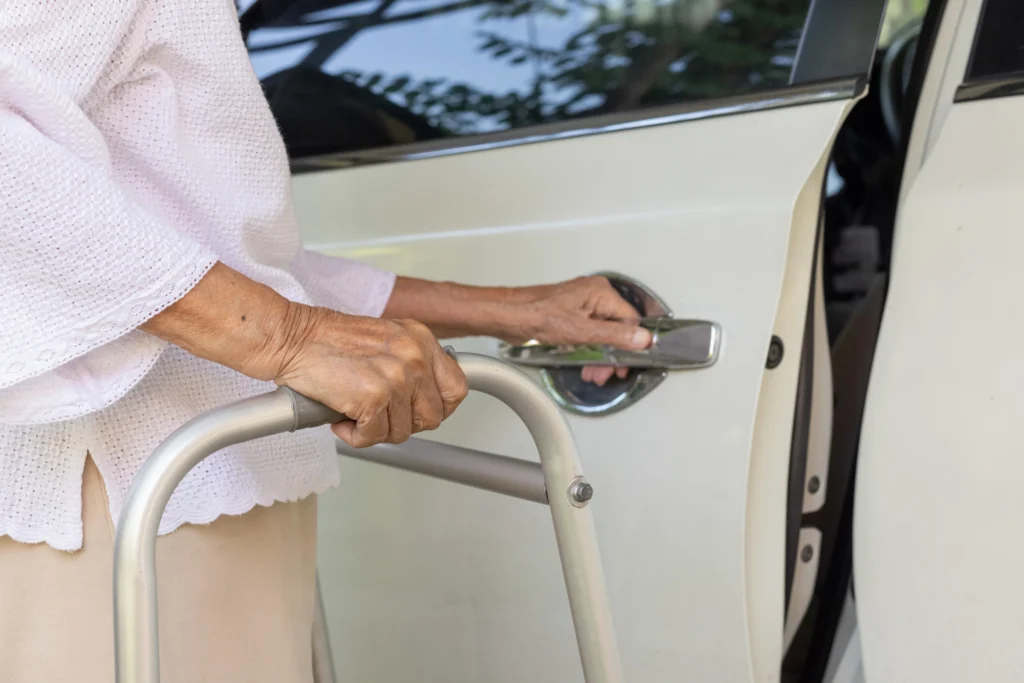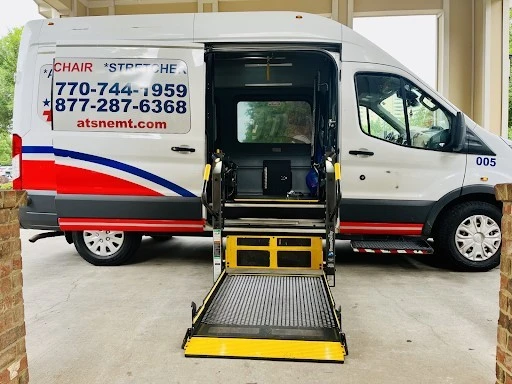Elderly Transportation Incidents in Georgia: Statistics, Safety Tips, and Prevention Measures

Navigating the bustling roads of Georgia can be a challenging affair for the elderly, with alarming statistics indicating a steep rise in transportation incidents involving this group. In 2023 alone, the poignant figures demand our urgent attention and action. This eye-opening blog post aims to shed light on these troubling trends while offering invaluable safety tips and useful prevention measures to ensure safer mobility for Georgia’s senior citizens. Join us as we journey through stark numbers, critical strategies, and proactive steps in a collective effort to remedy this growing concern that hits close to home for all Georgians. It’s not just about statistics, it’s about safeguarding our beloved grandparents, parents, neighbors, and friends. The road to change begins here!
Statistics on Elderly Transportation Accidents in Georgia
In Georgia, transportation accidents involving the elderly have become a pressing issue that demands attention. Understanding the statistics surrounding these incidents sheds light on the gravity of the situation and underscores the need for preventive measures.
According to data from the National Highway Traffic Safety Administration’s (NHTSA) Fatality Analysis Reporting System (FARS), there were a total of 1,797 traffic fatalities in Georgia in 2021. Among these, 391 were alcohol-impaired driving fatalities, while 306 involved pedestrians and an additional 15 were cyclists. These figures illustrate how transportation accidents do not discriminate based on age or mode of transportation.
Moreover, it is essential to examine the distribution of accidents between rural and urban areas. Of the total traffic fatalities in Georgia, 598 occurred in rural areas, whereas 1,199 took place in urban areas. The fatality rates per 100 million vehicle miles driven were higher in rural areas at 1.98 compared to 1.33 in urban areas.
When focusing specifically on passenger vehicle occupant fatalities, there were a significant number of individuals who failed to use seat belts properly. Out of the total 1,182 passenger vehicle occupant fatalities, a staggering 555 were unrestrained. This highlights the importance of seat belt usage for both safety-conscious drivers and passengers.
Implicit in these statistics is the vulnerability of our elderly population. As individuals age, their reflexes might slow down, making them more prone to transportation-related incidents. Additionally, age-related factors such as impaired vision or hearing loss can further increase accident risks.
Consider Mrs. Thompson, an independent 75-year-old woman who was involved in a serious car accident while driving to visit her grandchildren. Despite being an experienced driver with no previous accidents, she missed seeing a stop sign due to her deteriorating vision, leading to a collision with another vehicle. This unfortunate incident illustrates the potential dangers and consequences faced by elderly individuals on our roads.
To address these alarming statistics, it is crucial to examine the causes behind frequent transportation incidents involving the elderly and consider preventive measures that could be implemented to safeguard this vulnerable population.

Causes Behind Frequent Incidents
Understanding the underlying causes behind frequent transportation incidents involving the elderly in Georgia can help identify potential solutions and mitigate risks. Several factors contribute to this issue, some of which include:
- Age-related decline: As individuals age, physical and cognitive abilities may gradually decline, impacting their driving skills. Reduced reaction times, diminished hearing or vision abilities, and impaired motor functions can all increase the likelihood of accidents.
- Medical conditions and medications: Certain medical conditions such as dementia, Alzheimer’s disease, Parkinson’s disease, or epilepsy can impact an individual’s ability to drive safely. Moreover, prescription medications used to manage these conditions often come with side effects like drowsiness or impaired judgment that can compromise driving capabilities.
- Lack of awareness: Some elderly individuals may not fully grasp updated traffic laws or may struggle with adapting to changing driving conditions. This lack of awareness can lead to improper decision-making while on the road.
- Social isolation and limited transportation alternatives: The lack of accessible public transportation options in rural areas may force elderly individuals to rely solely on their own vehicles for mobility. Social isolation resulting from limited transportation alternatives may contribute to an increased willingness to take risks while driving.
It is important to note that these causes are not exclusive to the elderly population; however, they are more prevalent among older individuals due to natural age-related factors.
Let’s consider Mr. Johnson, an 80-year-old retiree who was involved in a car accident caused by his medication side effects. Mr. Johnson takes multiple medications daily due to his chronic health conditions, one of which has a known side effect of dizziness. While driving, he experienced sudden dizziness, leading to a loss of control and subsequent collision with another vehicle. This example showcases the influence of medications and underlying health conditions on driving safety among the elderly.
- In 2019, a study by the Governor’s Office of Highway Safety in Georgia revealed that there was a 14% increase in traffic fatalities involving drivers aged 65 and above compared to previous year.
- The same research indicated that about 32% of these incidents were due to failure to yield right of way, suggesting issues with judgement under complex driving conditions.
- According to data by AARP, an estimated 25% of public transit users in Georgia are seniors, indicating their heavy reliance on this mode of transportation despite associated risks.
Impact on the Elderly Population
When it comes to elderly transportation incidents in Georgia, the impact on this vulnerable population cannot be underestimated. Many older adults rely on transportation services to access essential healthcare appointments, grocery shopping, social gatherings, and other necessary activities. However, these incidents can have serious physical, emotional, and financial consequences for the elderly and their families.
One of the most concerning aspects is the risk of injuries faced by elderly passengers during transportation. Medical transport injuries in Georgia are more common than people realize, especially among disabled and elderly passengers. Common causes of injuries include driving too fast and failure to secure passengers properly.
For instance, driving too fast can result in sudden stops that can be dangerous for passengers with disabilities and can increase the risk of car accidents, causing whiplash and head injuries. Failing to properly secure wheelchair passengers can lead to injuries during sudden stops or collisions, and unsecured passengers may fall on others, causing harm.
These incidents not only cause physical harm but also take a toll on the emotional well-being of elderly individuals. The fear and anxiety stemming from an accident or injury can diminish their confidence in utilizing transportation services again. This lack of mobility can lead to isolation and social disconnection, further impacting their mental health.
The financial implications cannot be overlooked either. Injured individuals or their loved ones may incur significant medical expenses as a result of an incident during transportation. These costs may include hospital bills, rehabilitation expenses, and ongoing medical care needs that extend beyond the immediate incident.
It is important for society to recognize these impacts and work towards ensuring safer transportation options for our aging population. By focusing on safety measures and prevention strategies, we can mitigate these adverse effects and foster an environment where older adults feel secure while accessing transportation services.
Understanding the impact that transportation incidents have on the elderly population highlights the urgency of implementing adequate safety measures. Let’s explore some key safety measures that can be implemented to address this issue.

Safety Measures for Elderly Transportation
Ensuring the safety of elderly individuals during transportation involves a multi-faceted approach that encompasses various aspects, from vehicle safety to driver qualifications and passenger guidelines. Here are some crucial safety measures that can be implemented:
- Driver Screening and Training: Transport companies should have stringent screening processes in place, ensuring drivers possess the necessary qualifications, skills, and experience to safely transport elderly passengers. Comprehensive training programs should cover defensive driving techniques, sensitivity towards the needs of older adults, and emergency response protocols.
- Vehicle Maintenance and Safety: Regular maintenance of vehicles is essential to prevent breakdowns or malfunctions while transporting elderly passengers. Routine inspections should prioritize areas such as brakes, tires, seatbelts, ramps (for wheelchair-accessible vehicles), and passenger assistive devices, ensuring they are all in optimal working condition.
- Proper Passenger Securement: Ensuring proper securement of elderly passengers is crucial in preventing falls or injuries during transportation. Vehicles equipped with wheelchair ramps or lifts should have securement systems that meet industry safety standards. Adequate training should be provided to drivers on how to properly secure wheelchairs and mobility aids to minimize risk.
- Safe Driving Practices: Drivers should adhere to safe driving practices, including obeying traffic laws, maintaining appropriate speed limits, avoiding distractions like mobile phones, and being attentive to road conditions. They should also be cautious of sudden stops or accelerations that could pose risks to frail passengers.
- Communication and Emergency Preparedness: Clear communication channels between drivers and passengers facilitate addressing any concerns or emergencies promptly. Driver protocols should include having first aid knowledge, familiarity with emergency contact information for passengers, and communication systems readily available at all times.
Implementing these safety measures ensures that the transportation needs of the elderly population are met without compromising their well-being. By prioritizing their safety and addressing potential risks, we can create an environment where elderly individuals have the confidence to utilize transportation services and maintain their independence.
Existing Regulations and Protocols
When it comes to elderly transportation in Georgia, there are existing regulations and protocols in place to ensure the safety and well-being of senior passengers. These regulations aim to address the specific needs and challenges associated with transporting elderly individuals, who may have limited mobility or other medical conditions.
Georgia law requires medical transport services to adhere to certain standards and guidelines. For instance, drivers must possess appropriate licenses and certifications, demonstrating their qualifications to operate vehicles equipped for transporting disabled or elderly passengers. Additionally, companies providing medical transport services must maintain the vehicles regularly, ensuring they are safe and reliable for passenger use.
To illustrate the importance of these regulations, let’s consider a scenario where an elderly individual requires transportation to a medical appointment. If the driver is not properly trained or the vehicle is not adequately maintained, it can lead to potential accidents or injuries during transit. However, by enforcing regulations and protocols, such risks can be minimized, ensuring a safer transportation experience for seniors.
Furthermore, these regulations also extend to passenger safety during transit. Medical transport services are responsible for properly securing wheelchair passengers to prevent injuries caused by sudden stops or collisions. Failure to do so can result in severe harm not only to the unsecured individual but also to others inside the vehicle.
By establishing stringent regulations and protocols, authorities and organizations aim to create a framework that prioritizes the safety of elderly individuals during transportation. These measures play a crucial role in reducing the likelihood of incidents and ensuring that transportation providers uphold a high standard of care.
Now that we understand the importance of existing regulations and protocols in safeguarding elderly passengers during transportation, let’s explore the role of medical transport services in this context.
Medical Transport Services in Georgia play a crucial role in ensuring that individuals with medical needs have reliable and safe transportation to and from healthcare facilities, appointments, and other essential destinations.
Role of Medical Transport Services
Medical transport services serve as a vital link in maintaining accessible transportation options for elderly individuals in Georgia. These specialized services cater specifically to those with physical limitations or medical conditions that require assistance during transit.
One primary role of medical transport services is to provide door-to-door transportation for seniors, ensuring they can access necessary medical appointments, treatments, or other essential services. This level of assistance is particularly crucial for elderly individuals who may face challenges in navigating public transportation or driving themselves due to age-related conditions.
Consider an elderly person who requires frequent visits to healthcare providers for check-ups and treatments but lacks the means or ability to drive. Medical transport services bridge this gap by providing reliable transportation specifically tailored to their needs, reducing the risk of missed appointments or delayed care.
These services also prioritize the safety and well-being of their passengers during transit. Trained drivers are knowledgeable about handling medical equipment or assisting individuals with mobility aids like wheelchairs or walkers. Additionally, vehicles used by these services are often equipped with necessary features such as wheelchair lifts or ramps for easy accessibility.
Moreover, medical transport services understand the unique needs and vulnerabilities of elderly passengers. They are trained to handle potential health emergencies that may arise during transit and can provide immediate assistance until professional medical help arrives. This aspect ensures a greater sense of security and peace of mind for both the elderly passenger and their loved ones.
Having explored the role of medical transport services in ensuring safe transportation for the elderly, let’s now delve into effective prevention measures that can further enhance their overall well-being during transit.

Prevention of Elderly Transportation Incidents
Ensuring the safety and well-being of elderly individuals during transportation is of paramount importance. By implementing effective prevention measures, we can significantly reduce the occurrence of transportation incidents involving the elderly population. Let’s explore some key strategies to prevent these incidents and promote a safer transportation experience for our senior citizens.
One fundamental aspect of prevention is providing adequate training and education to both drivers and caregivers who assist the elderly during transportation. Drivers should receive specialized training that addresses the unique needs and challenges of elderly passengers, such as assisting with mobility devices or addressing medical emergencies. Caregivers should also be educated on ensuring passenger comfort, monitoring their well-being, and supporting their specific requirements during travel.
For instance, training programs could include modules on understanding common age-related ailments, techniques for communication and assistance with passengers who have cognitive impairments, and strategies for handling emergency situations with professionalism and care.
Regular vehicle maintenance is another crucial element in preventing transportation incidents. Ensuring that vehicles undergo routine inspections, mechanical checks, and necessary repairs can help identify potential hazards before they escalate into accidents. Proper maintenance includes maintaining tire pressure, checking brake systems, inspecting vehicle lights for functionality, and verifying optimal functioning of safety features like seat belts.
Implementing stringent driver qualifications and screening processes is equally essential in preventing incidents involving the elderly. Professional drivers should possess clean driving records and undergo background checks to ensure their reliability and competence. Furthermore, regular performance evaluations can help identify areas where additional training or improvement may be necessary.
Creating an environment that prioritizes elderly passenger comfort and accessibility is crucial in reducing incidents during transportation. This involves providing vehicles that are equipped with appropriate seating arrangements for mobility-impaired individuals, including accessible ramps or lifts for wheelchair users. In addition, ensuring proper signage inside vehicles to aid passenger orientation and clear communication between drivers and passengers can enhance safety and reduce the likelihood of accidents or injuries.
Moreover, fostering a culture of open communication between transportation providers, elderly passengers, and their caregivers is vital. Encouraging feedback, addressing concerns, and promptly acting upon reports of unsafe conditions or incidents can help identify areas for improvement and ensure a continuous commitment to passenger safety.
While these prevention measures play a significant role in safeguarding the elderly during transportation, it’s essential for individuals themselves and their caregivers to remain vigilant. Just as an experienced hiker would carry a map and supplies when embarking on a challenging trail, elderly individuals should equip themselves with proper knowledge and resources before traveling. This includes planning journeys in advance, understanding their rights as passengers, being aware of appropriate travel times, informing caregivers about any medications or medical conditions that may affect the journey, and using assistive devices such as mobility aids or personal emergency response systems.
Having explored the preventative measures that can be taken to ensure safer transportation for the elderly, let’s now turn our focus to case studies of transportation incidents involving senior citizens in Georgia.
Case Studies of Transportation Incidents in Georgia
Georgia has witnessed several transportation incidents involving elderly individuals in recent years. An analysis of these cases sheds light on common contributing factors and highlights the importance of preventive measures. Let’s examine a few prominent examples:
- One case involved an elderly passenger who sustained injuries when a driver failed to secure their wheelchair properly during transit. The incident revealed the need for proper driver training on securing mobility devices to prevent accidents caused by inadequate restraints.
- Another notable case highlighted the significance of vehicle maintenance. In this instance, a malfunctioning vehicle door led to an elderly passenger falling when exiting the vehicle. This accident emphasized the importance of regular checks on vehicle functionality and prompt repairs to avoid causing harm to passengers.
- Additionally, there have been cases where communication breakdown between drivers and elderly passengers resulted in missed stops or confusion, leading to passenger distress and inconvenience. These incidents underscore the need for effective communication strategies, such as clear signage and ensuring drivers are trained in handling communication challenges common among the elderly.
Analyzing these case studies allows us to better understand the specific circumstances surrounding transportation incidents involving the elderly. By learning from these examples, we can continually improve our prevention efforts and implement targeted solutions to address the identified factors contributing to accidents.

To schedule a ride, individuals can typically contact Medical Transport Services through a dedicated hotline, online booking system, or by coordinating with healthcare providers who may arrange transportation on their behalf.
Your Comfort, Our Commitment: Experience Exceptional Elderly Transportation at Americ Transit Services
Americ Transit Services a Non-Emergency Medical Transportation, where we prioritize the comfort, safety, and joy of our senior community! Embark on a journey with us as we redefine elderly transportation with a commitment to excellence and compassion. Our fleet of specially designed vehicles ensures a smooth and accessible ride, accommodating various mobility needs.
At Americ Transit Services, we understand the importance of maintaining an active and engaged lifestyle, and our services are tailored to make every journey a delightful experience. From scenic tram rides to the convenience of door-to-door pickups, we go the extra mile to ensure that our seniors not only reach their destinations but do so with smiles on their faces.
Our team of dedicated and caring professionals takes pride in providing more than just transportation; we offer companionship, support, and a sense of community. Rest assured that your loved ones are in good hands, as our drivers are trained to prioritize safety and courtesy, creating an environment where seniors feel valued and respected.
Choose Americ Transit Services for Elderly Transportation—where every ride is a step towards enhancing the quality of life for our cherished seniors. Contact us today to experience the difference in compassionate, reliable, and senior-centric transportation services. Let’s journey together towards a brighter, more accessible future!
Book a ride today or call (770) 744-1959 to learn more and schedule your next ride!
Recent Comments